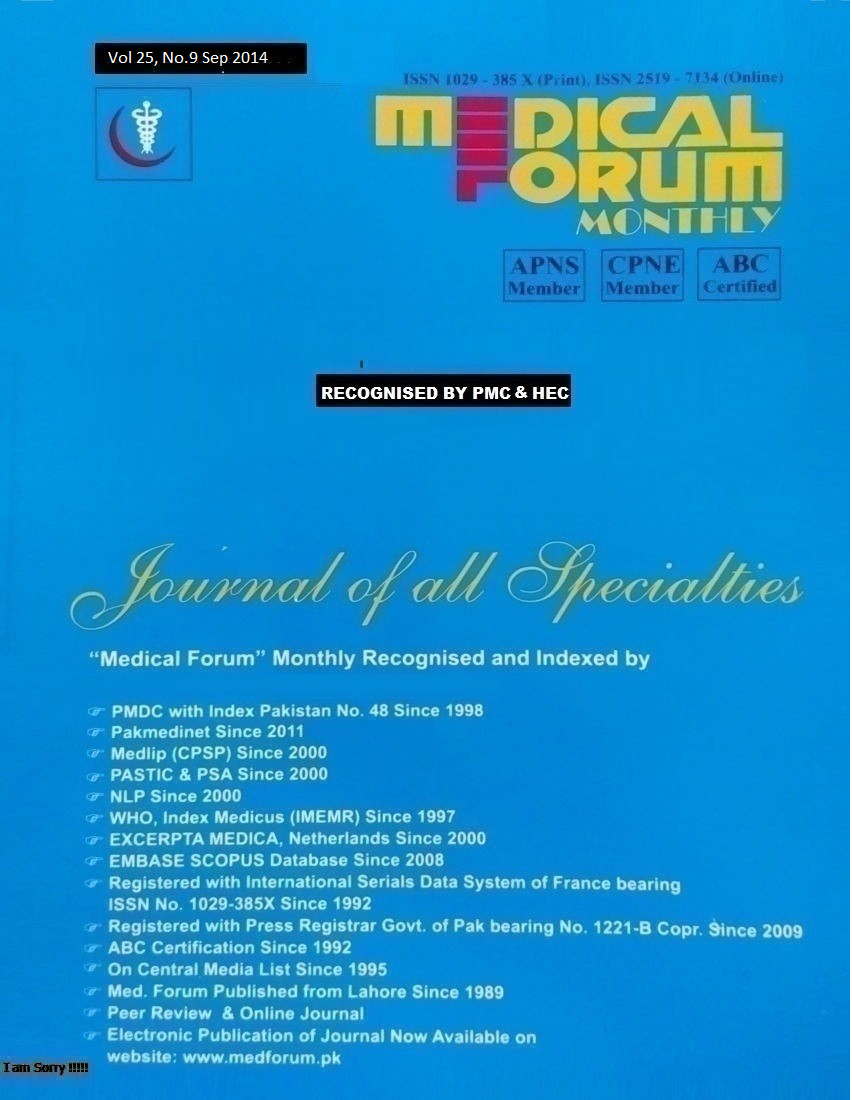
2. Position of the Knot in Hanging and Strangulation in Asphyxial Deaths in Medico-Legal Autopsies in Lahore
1. Sadaf Nadar 2. Muhammad Iqbal 3. Khurram Suhail Raja 4. Pervaiz A. Rana
5. Javed Iqbal Khokhar
1. Asstt. Prof. of Forensic Medicine & Toxicology, CMH Lahore Medical College, Lahore, 2. Asstt. Prof. of
Forensic Medicine, Wah Medical College, Wah Cantt. 3. Assoc. Prof. of Forensic Medicine, Punjab Medical College, Faisalabad 4. Prof. and Head of Forensic Medicine & Toxicology, CMH Lahore Medical College Lahore 5. Prof. of Forensic Medicine, CMH Lahore Medical College, Lahore.
ABSTRACT
Objective: This study was carried out to find out the position of the knot in all the asphyxial deaths due to hanging and ligature strangulation.
Study Design: Retrospective study.
Place and Duration of Study: This study was carried out at Forensic Medicine Department KEMU, Lahore, during the period from Jan. 2006 to Dec. 2008.
Materials and Method: Out of total 2979 medico-legal autopsies, 220 cases of fatal compression to the neck were selected. The autopsy reports, police documents and hospital records were studied.
 Results: Out of total autopsies compressive trauma to the neck was in 220 cases (7.39%). Hanging was the commonest cause 42.27%, ligature strangulation 29.09% and manual throttling 23.64%. The manner of death out of 104 cases of hanging was 68.50% (68 cases) with predominance of males (Male/Female ratio 2.78:1). 3rd decade showed higher incidence in males than the females which were more in 2nd decade. No hanging was seen in the 1st decade. The strangulation was common in 2nd, 3rd and 4th decades of life. Males showed higher incidence than females in hanging in 3rd and 4th decade. Females showed higher incidence in 2nd, 3rd and 4th decades in ligature strangulations than males. In throttling males showed higher incidence in 3rd decade than females in 4th decade. The homicidal deaths were 57.27%, suicidal 30.90% and un-determined were 11.82%. Ligature strangulation and throttling were the methods used in homicidal manner (57.27%) while hanging was used for suicide (30.97%). In hanging the position of the knot was at occiput in 62.50% cases and 23.08% had lateral position. In ligature strangulation 78.13% showed the knot on the front and 21.87% lateral.
Results: Out of total autopsies compressive trauma to the neck was in 220 cases (7.39%). Hanging was the commonest cause 42.27%, ligature strangulation 29.09% and manual throttling 23.64%. The manner of death out of 104 cases of hanging was 68.50% (68 cases) with predominance of males (Male/Female ratio 2.78:1). 3rd decade showed higher incidence in males than the females which were more in 2nd decade. No hanging was seen in the 1st decade. The strangulation was common in 2nd, 3rd and 4th decades of life. Males showed higher incidence than females in hanging in 3rd and 4th decade. Females showed higher incidence in 2nd, 3rd and 4th decades in ligature strangulations than males. In throttling males showed higher incidence in 3rd decade than females in 4th decade. The homicidal deaths were 57.27%, suicidal 30.90% and un-determined were 11.82%. Ligature strangulation and throttling were the methods used in homicidal manner (57.27%) while hanging was used for suicide (30.97%). In hanging the position of the knot was at occiput in 62.50% cases and 23.08% had lateral position. In ligature strangulation 78.13% showed the knot on the front and 21.87% lateral.
Conclusion: In hanging, which is a common method of suicide in our country, the knot was at occiput in 65 cases (62.50%), on right or left lateral in 24 cases (23.08%) and in none of the case was on the front. While in ligature strangulation, in 50 cases (78.13%) it was on the front, in 14 cases (21.87%) on right or left side and in none of the
case it was on the front.
Key Words: Asphyxia, Hanging, Ligature Strangulation
